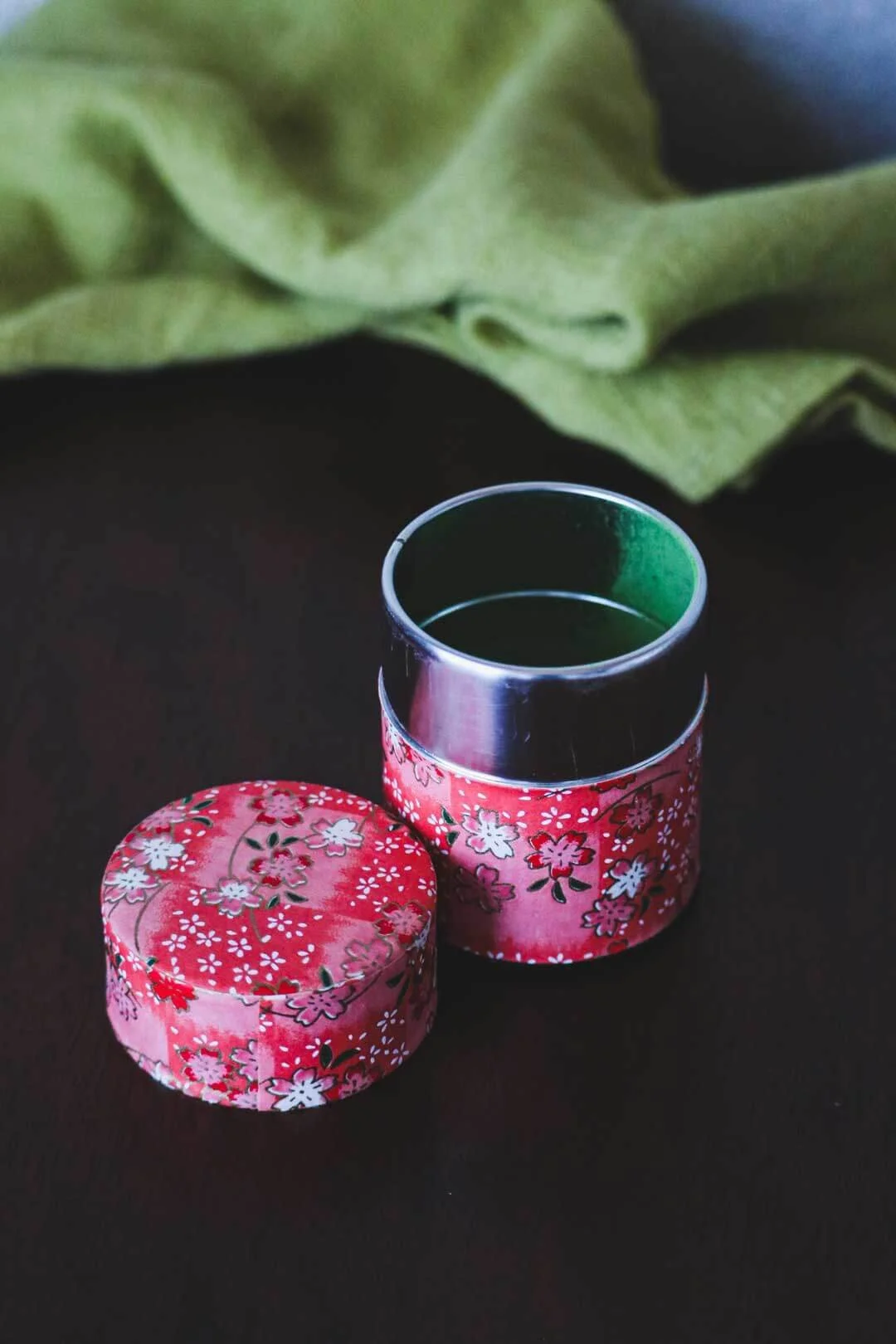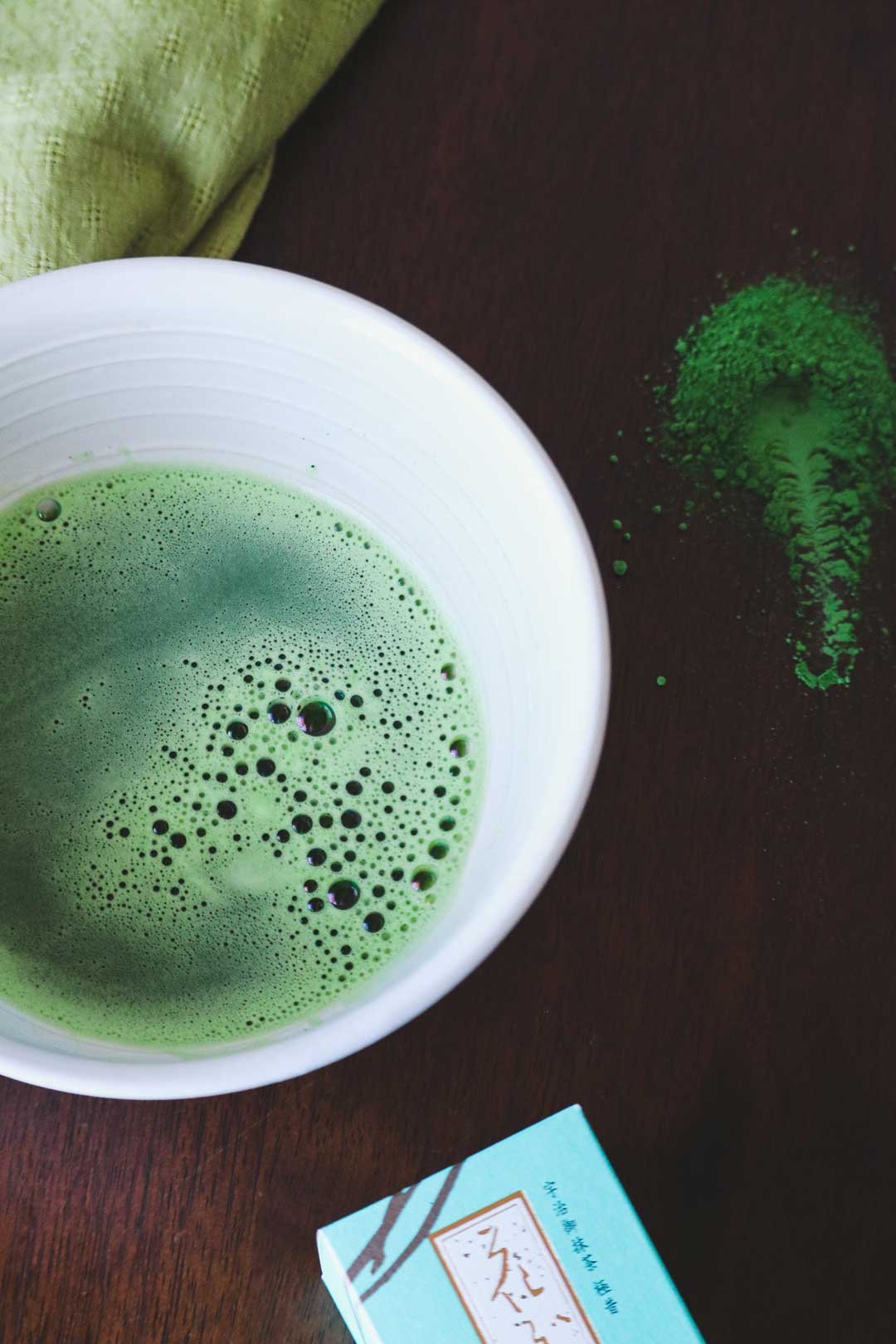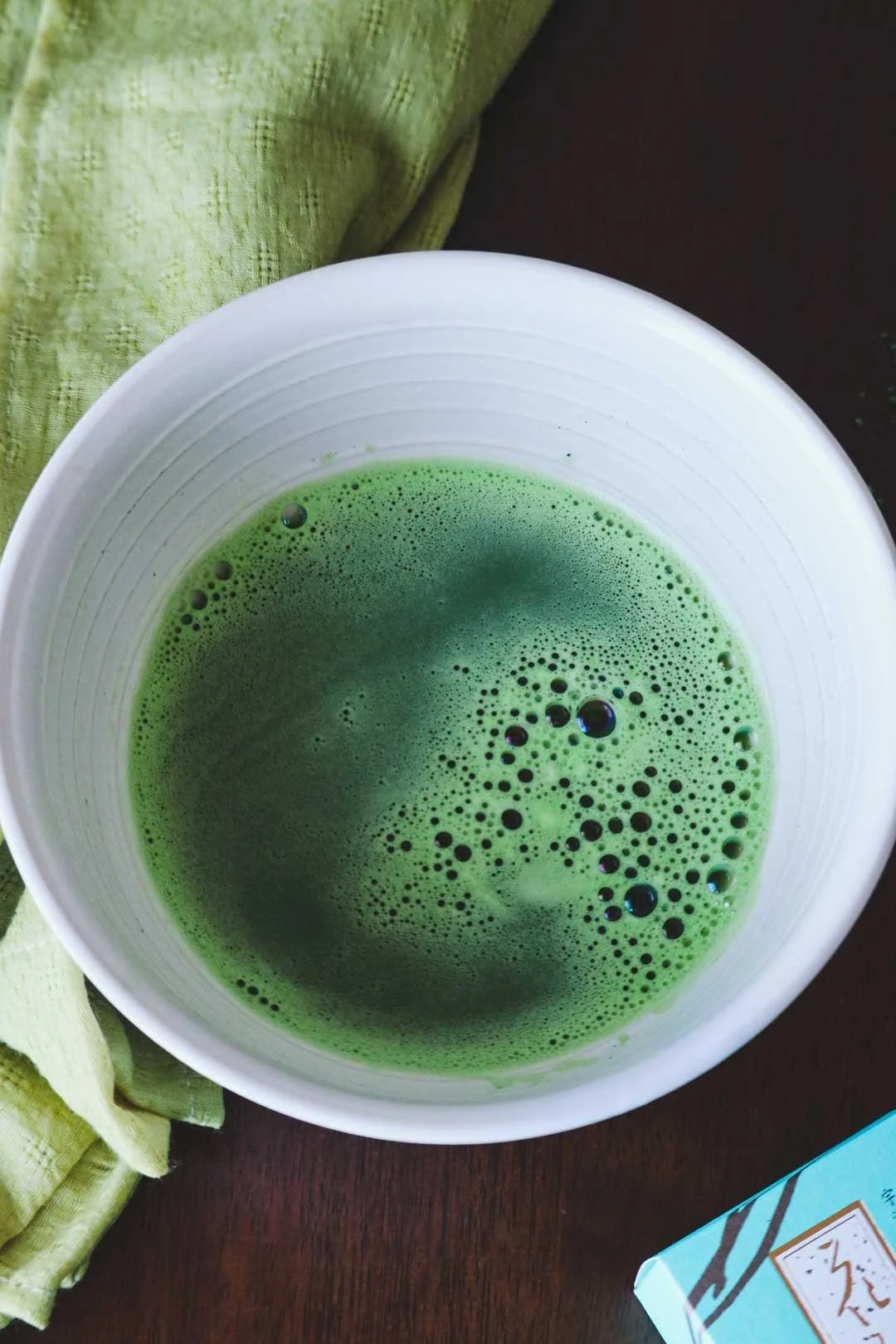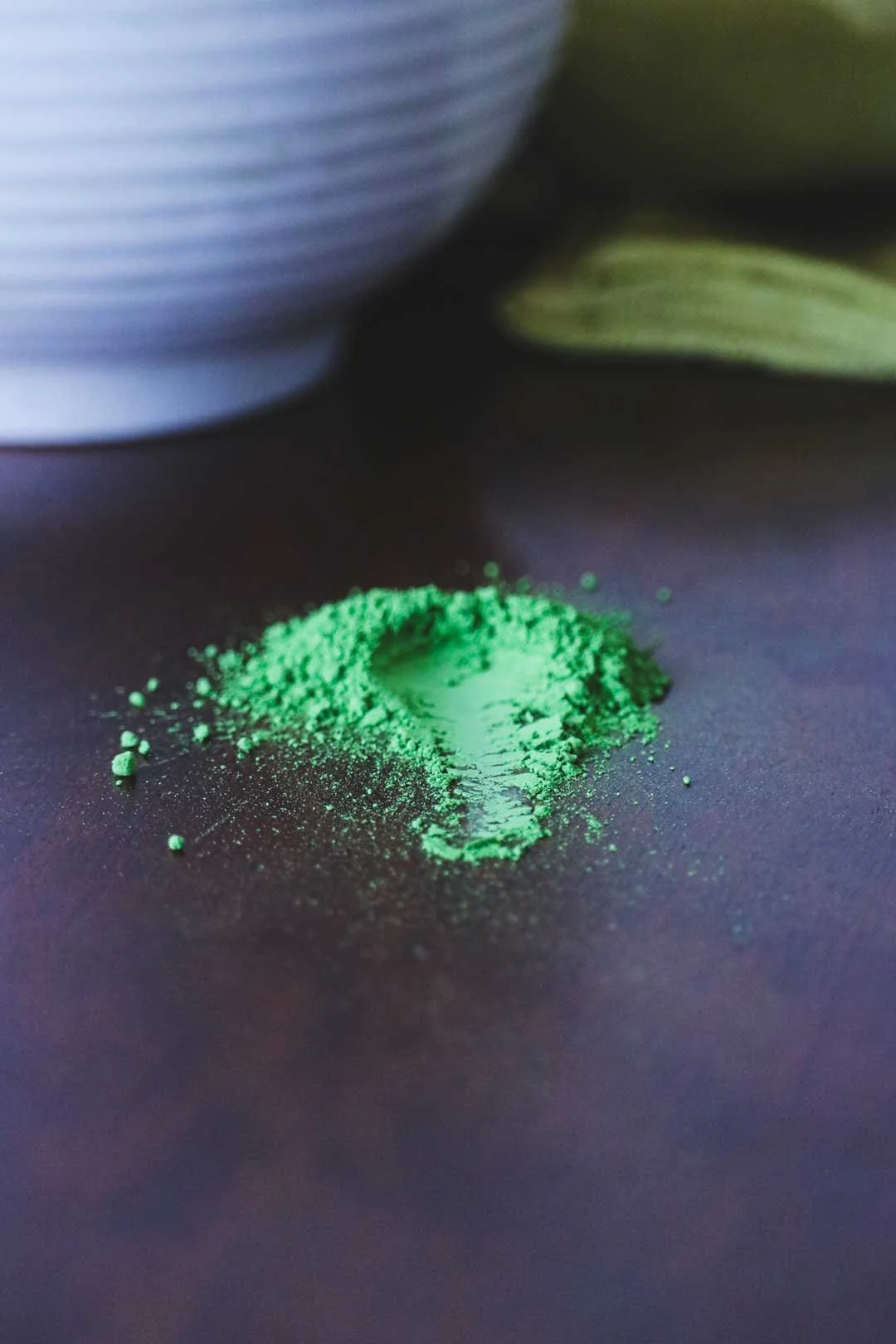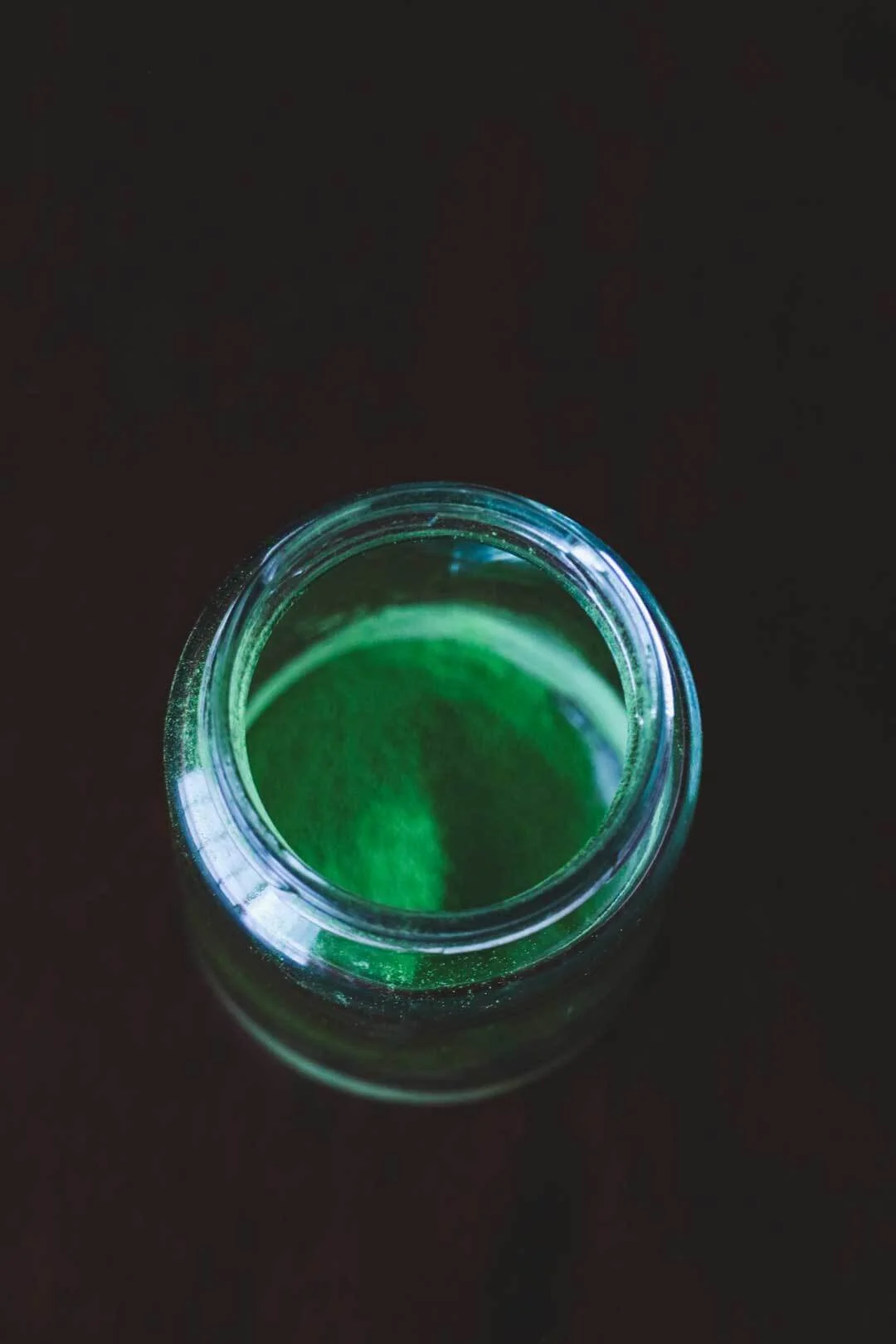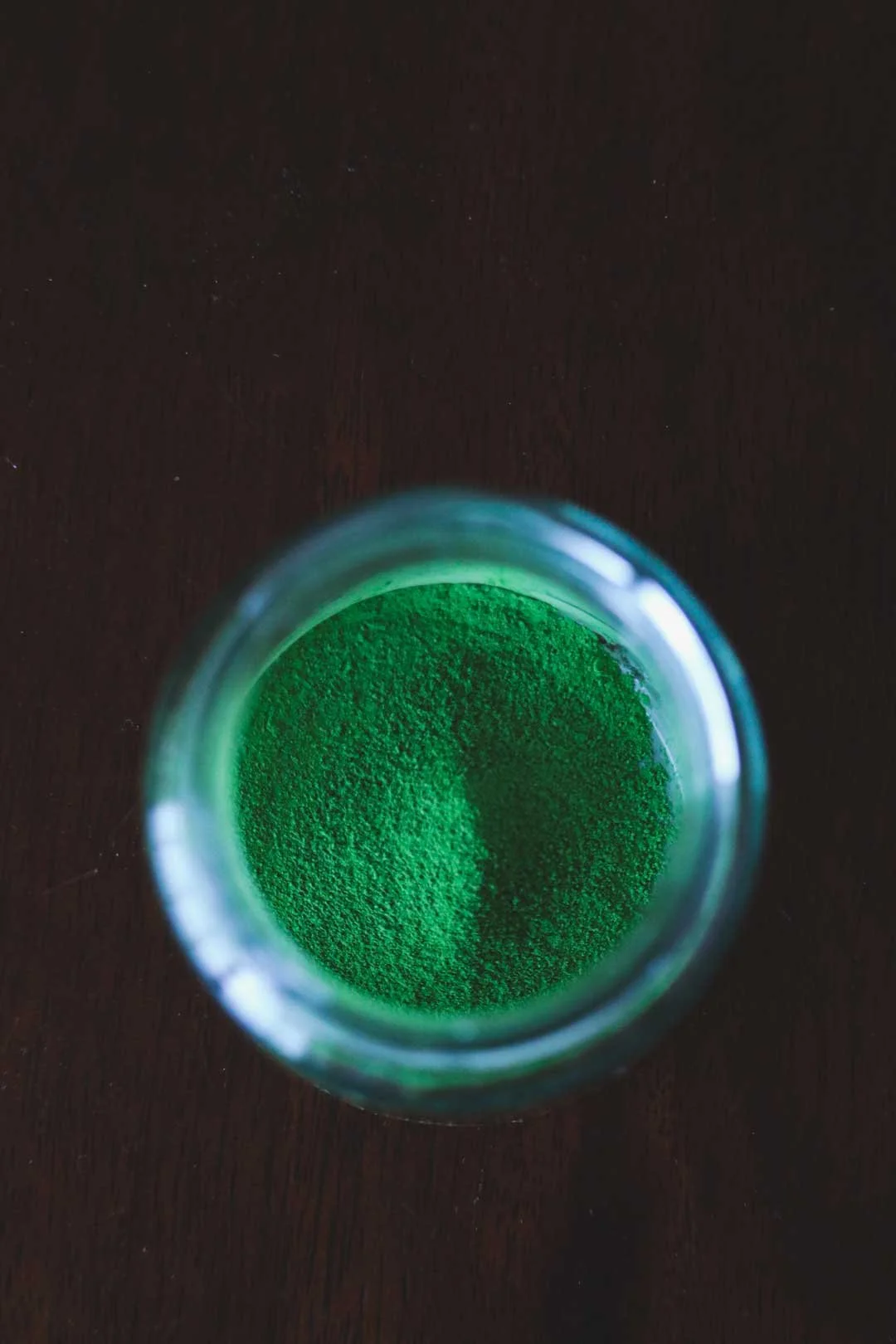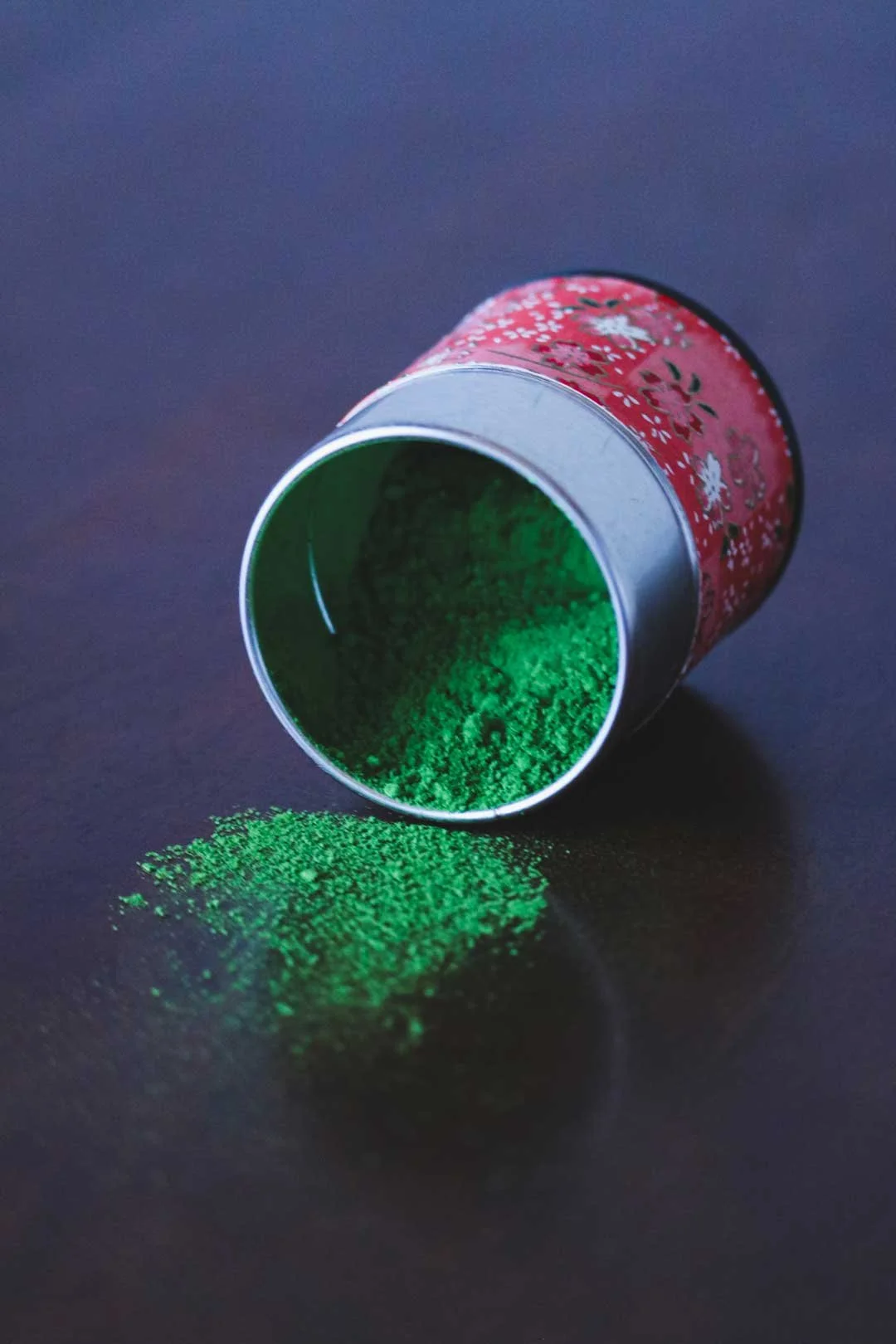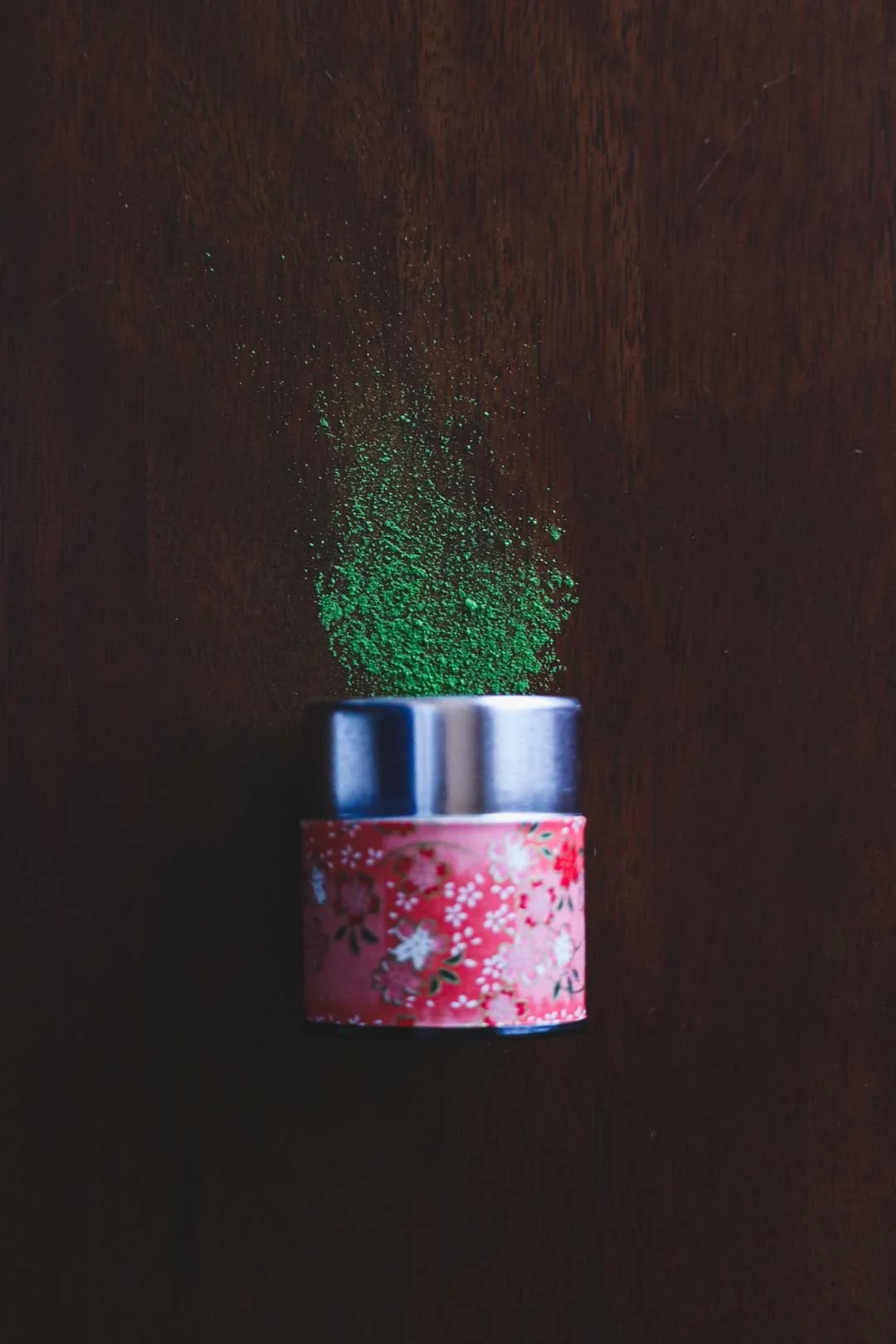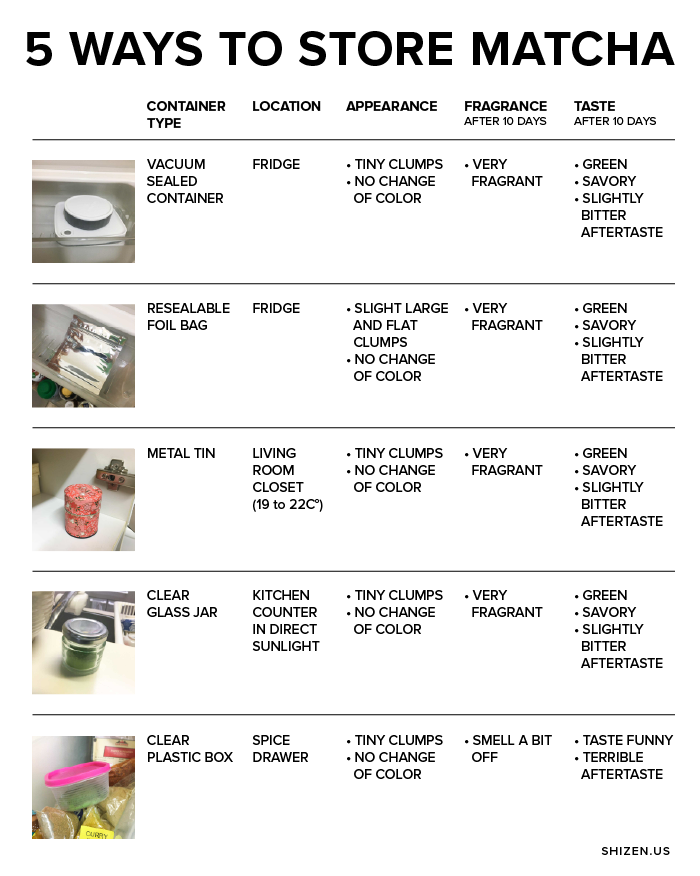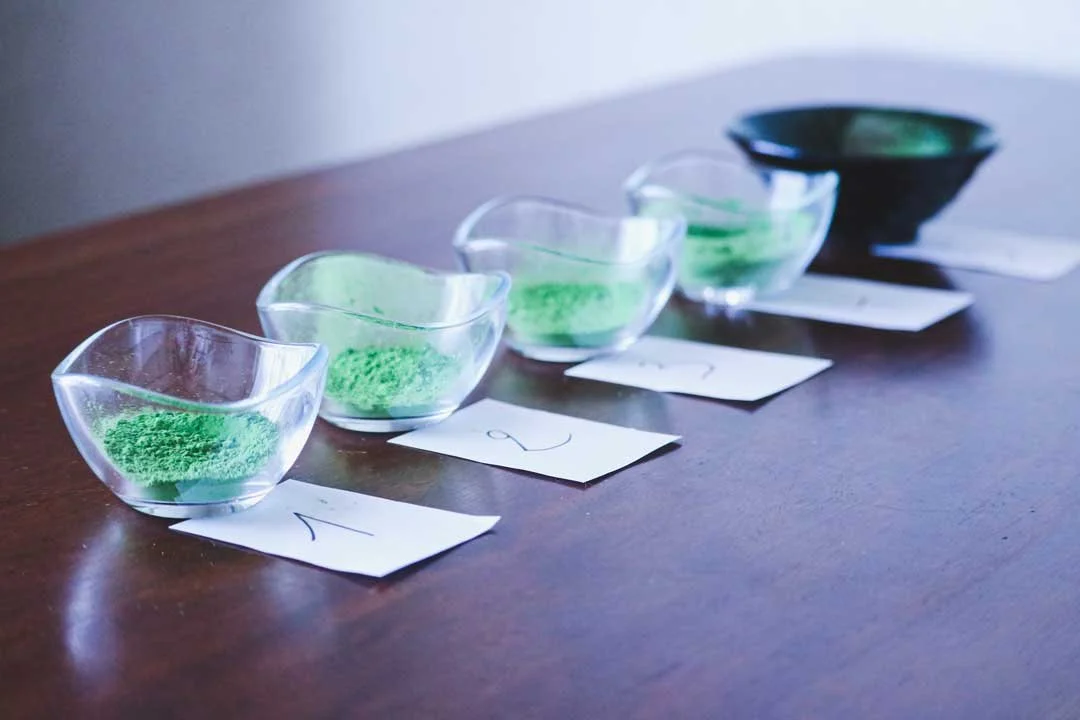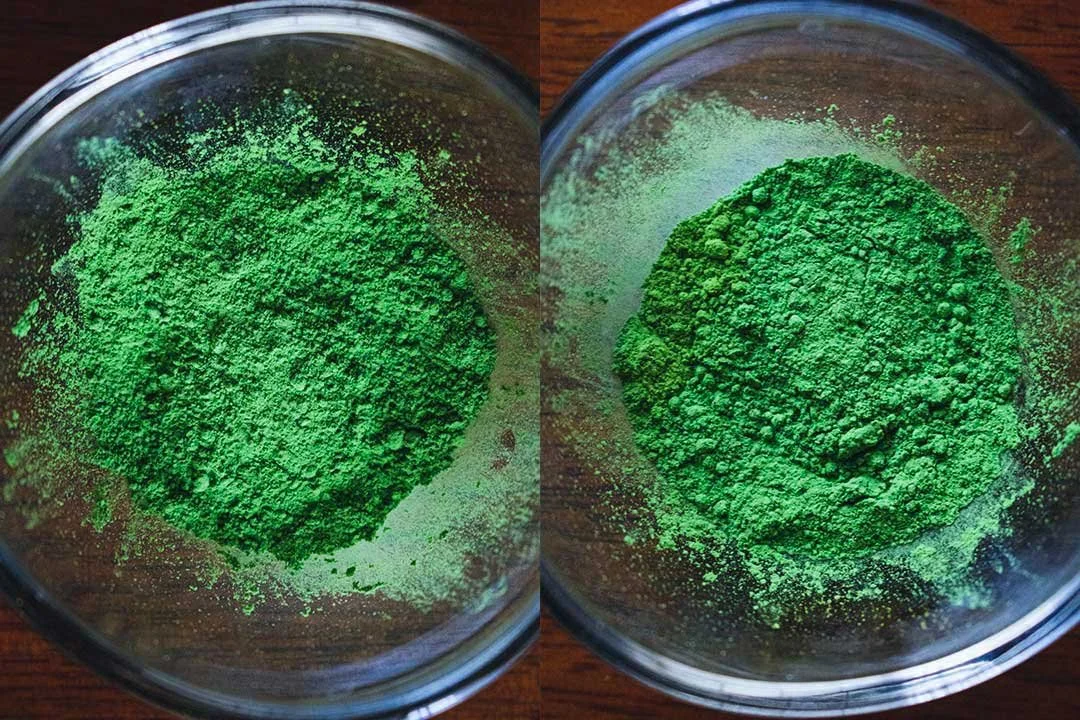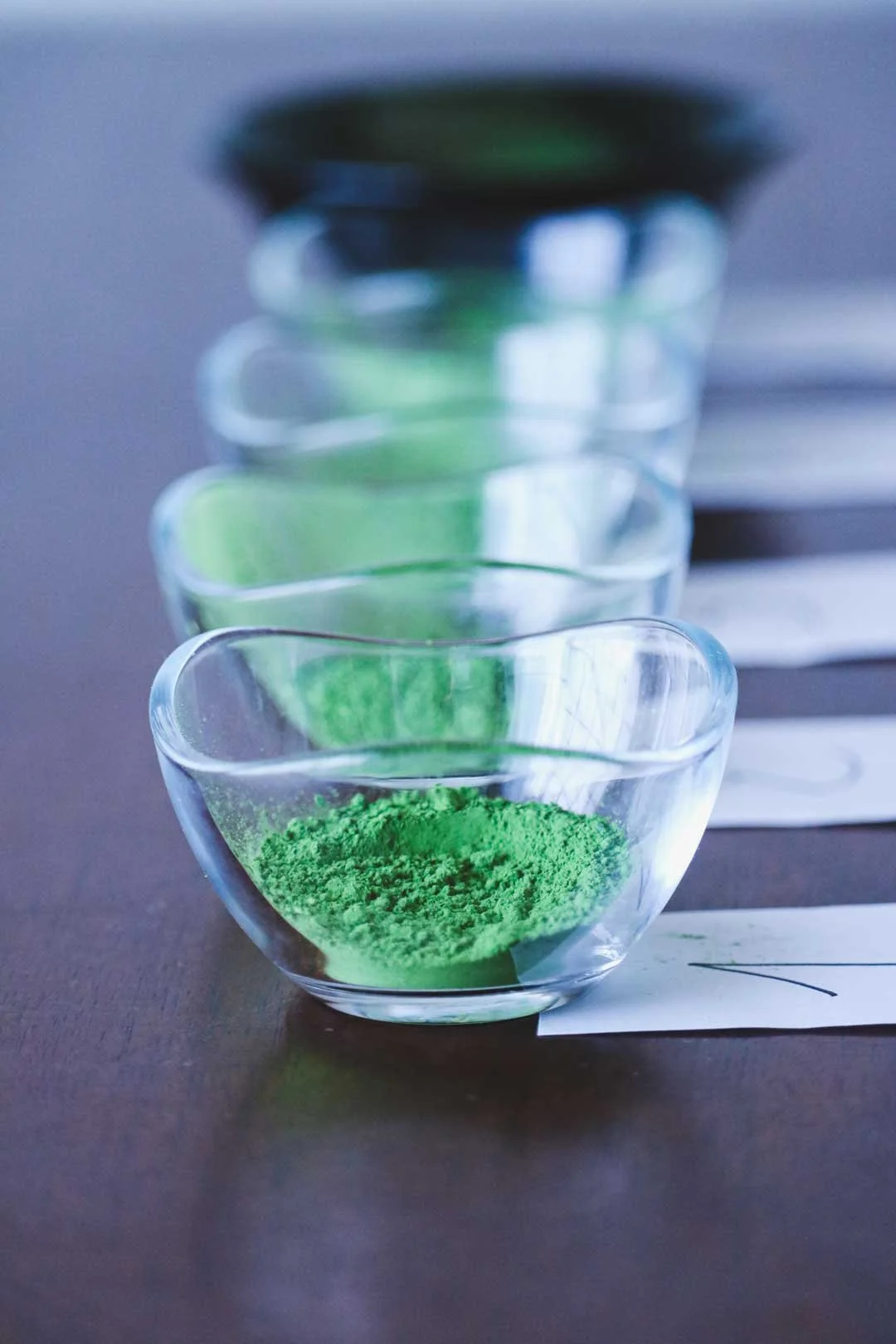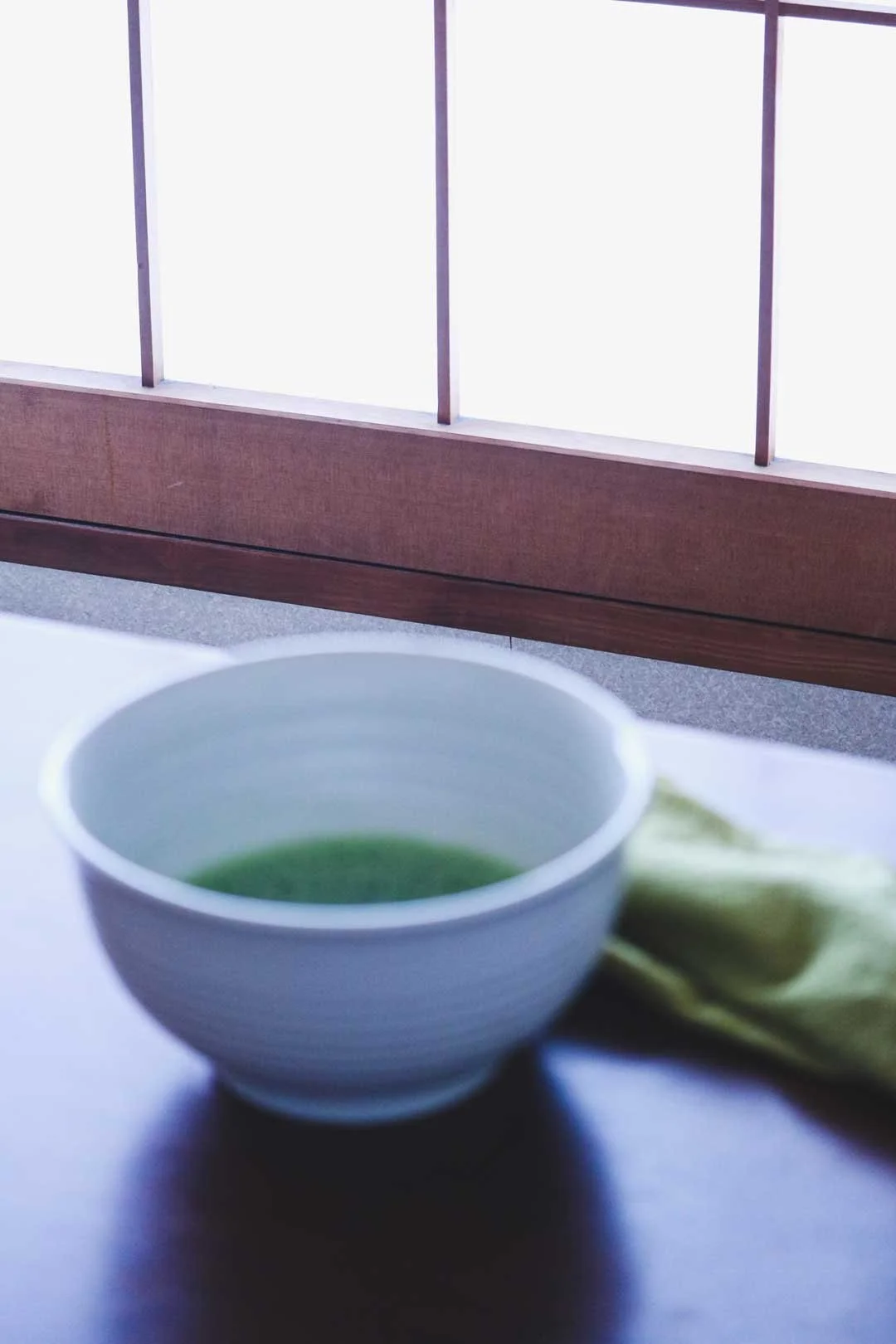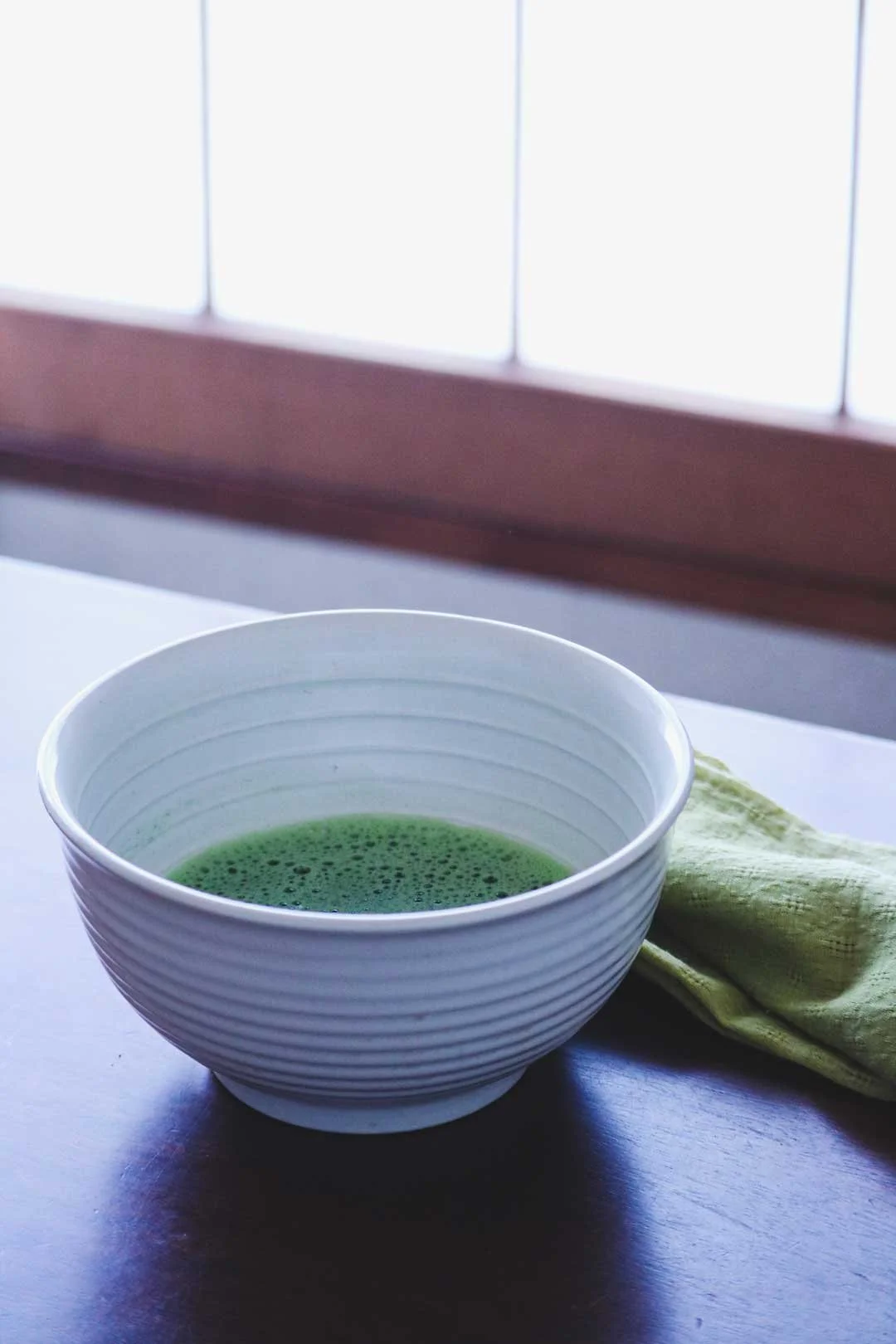How To Store Matcha?
How to store matcha?
That is a legitimate question.
Especially given that matcha is so delicate.
Air, light, humidity… the danger is literally everywhere.
Before you know it, your matcha has already lost its freshness and vivid green color you like so much.
But no panic.
It doesn’t have to be like that.
Today I am giving you the key to everlasting matcha (or at least the closest you can get to it).
So keep reading to find out:
What is the difference between fresh and old matcha
Why proper matcha storage matters so much
What are the enemies of matcha and how to preserve it
What are the best (and worst) ways to store it
Are you ready for some matcha quality time?
Then let’s get to it.
What is Matcha?
Matcha is a stone-ground powdered green tea exclusively made in Japan.
It is very unique compared to other kinds of green teas.
It is not steeped but mixed with hot water and whisked until it becomes all frothy.
So you actually consume the whole leaf with its nutrients rather than just a brew.
That is why matcha is full of antioxidants, leading to numerous health benefits.
Another unique characteristic of matcha is its growing process.
The leaves are shaded about 3 to 4 weeks prior to harvesting.
Hidden from the sun, they stock up on L-theanine which is the amino acid responsible for matcha’s signature umami taste.
The leaves once processed are called ¨Tencha¨.
They will, later on, be ground to become matcha.
What Does Fresh Matcha Taste Like?
I dare say not one matcha tastes exactly like another.
Matcha master blenders try hard to make it so – to harmonize the taste from one year to the next.
But it’s a tough job.
Matcha is all about nuances.
New matcha mostly tastes vegetal (like grass or green vegetables).
Sometimes a bit bitter with savory notes (the umami flavor I mentioned earlier).
It can also be sweet and mellow.
The taste and aroma of matcha are influenced by a number of things:
Its growing location (terroir)
The kind of varietal used
How long its leaves were covered prior to harvesting
How it was processed
Quality freshly ground matcha will have a bright, almost electric green color.
This is because shading the tea plant generates more chlorophyll in the leaves. Chlorophyll is the pigment responsible for the green color of most plants.
Matcha should also feel silky to the touch.
It is a very fine powder, barely 10 microns the particle.
Does Matcha Go Bad?
No, matcha does not go bad per se.
What do I mean by that?
I mean it won’t get all moldy because you left it alone for one or two years.
It would still be safe to consume.
But not so tasty anymore…
Matcha degrades with time, mainly because of oxidation.
Just like ground spices, the color, taste, and aroma of matcha will change as it gets older.
Its pretty green hue will dull into a yellowish-brown. And its aroma will eventually fade away.
Tea getting old is not necessarily a bad thing though.
In fact, some teas can get better with age like Chinese Pu Er tea.
But Japanese green teas such as Gyokuro and matcha are not intended to be aged.
Green tea is meant to remind you of spring.
Young, vibrant, green spring.
That is the flavor you are looking for in a good bowl of matcha.
And that is why it is better to enjoy fresh.
Matcha’s Shelf Life
Matcha’s shelf life is relatively short.
It will start to deteriorate as soon as it has been ground.
The dream for all matcha lovers would be to grind it themselves and consume it right away.
Alas, not everyone can own Tencha from Japan and a proper stone mill to boot…
Generally speaking, matcha, if stored properly, can last 16 months after grinding. But the answer to ¨how long matcha stays fresh'' is really a matter of opinion.
I would say matcha bought from reliable tea shops is usually 2 to 6 months old – so you could still drink it over a year after your purchase.
Of course, the sooner you drink it the better!
Don't wait for special occasions.
Any day is a good day to have matcha.
Also, unless you need it for culinary purposes like baking, I wouldn’t trust matcha sold in supermarkets.
Those tend to be already quite old if they are actually real matcha.
Pro-tip: Do not buy big quantities of matcha at once. Fresher matcha tastes the best. You need 2g to prepare a bowl. So 20 to 40g should be a good start.
3 Reasons Why Proper Matcha Storage Matters
Storing matcha properly doesn’t require much effort on your part really.
And yet, its importance is capital.
Capital like with a capital ¨C¨.
Here is why:
1. It Keeps Your Matcha Fresh For Longer
I mentioned earlier that matcha loses its favorable traits over time.
In fact, less oxidized teas like green and yellow teas tend to deteriorate faster.
But why is that?
To understand, you first need to know about oxidization.
Oxidation occurs when air gets inside damaged tea leaves and mixes with enzymes.
It causes the taste and color of the tea to change.
Red tea (called black tea in the West), for example, is purposely oxidized so it can get its typical dark color and rich, fruity flavor.
In the case of green tea, the enzymes are neutralized via the steaming process of the leaves. It allows the tea to keep its green color and pleasant vegetal notes. So green tea is 0% oxidized.
Unfortunately, tea will go on oxidizing even after its processing is completed, causing further degradation.
And remember, green tea is valued for its greenness and lack of oxidation.
So it will be more affected than other heavily oxidized teas.
That is where proper storage comes in.
Because if matcha’s oxidation process can’t be stopped, it can at least be slowed down.
Completely sealing matcha in an airtight container is the way to go.
By protecting your matcha from oxygen, you will give it a real chance to stay fresh for longer.
2. It Helps Preserve Matcha’s Health Benefits
By oxidizing, matcha doesn’t only lose its freshness.
It also loses one of its best attributes: the health benefits.
Because matcha has tons of them! For example, it is said that matcha:
Boosts your immune system
Reduces the risk of cancers and circulatory system problems
Has a calming effect on the brain, and helps you focus
As surprising as it sounds, matcha is also good for your oral hygiene!
If you are curious to know why, check out the details in our article 5 Reasons Matcha is Great For Your Teeth.
Yes, matcha is healthy and packed with powerful antioxidants (mainly catechins and epigallocatechin gallate).
So it would be a shame to waste it.
That is why good storage is so crucial.
It is the key to preserving your matcha and all the benefits that come with it.
3. It Gives You a Better Return on Investment
Let’s be honest, matcha is not the cheapest tea in the world.
Actually, I like to call it the ¨green gold¨ of Japan.
Of curiosity, I wondered how much would cost expensive matcha in Japan.
After a quick search on the net, I found one (outrageously) pricey Uji Matcha: 27 000 yen for 30g. No less than 900 yen per 1g (about $8 USD).
Of course, all matcha isn’t that expensive.
Nonetheless, chanoyu tea ceremony level matcha would cost you at least $ 0.75 per gram.
But matcha producers have valid reasons to ask as much:
Good matcha must be correctly shaded for at least 3 weeks before harvesting
It only uses the young buds and shoots of the tea plant
The grinding on a stone takes a lot of time
Obviously, producing quality matcha is a lot of work. It is only natural it also impacts its price.
If you want to get a better return on your investment, learning how to store matcha makes a lot of sense.
Because great matcha storage equals longer shelf life.
4 Tips on Ideal Matcha Storage
1. Know Your Enemies (aka air, humidity, light, heat, and odors)
Before getting to the question ¨how to store matcha?¨, let’s first go back to the basics.
What are the enemies of my tea?
There are five main dangers when it comes to tea preservation:
Air (oxygen)
Humidity
Light
Heat
Strong odors
We already talked a little about air.
The oxygen around us has the power to oxidize matcha which will eventually go stale.
Tea also happens to be hygroscopic (a fancy word to say tea absorbs humidity in the air).
Matcha in contact with moisture will get all clumpy at best, or spoil at worse.
Extra info: Clumps are not always a bad sign. In fact, good-quality matcha tends to have some clumps. As you know, matcha is a stone-ground tea. The friction between the two grinding stones creates static electricity which makes matcha particles stick together. Those don’t have anything to do with clumps generated by humidity
The light is responsible for photodegradation in your tea.
Basically, it means long exposure to light can cause damage to matcha.
More specifically, it will have a harmful impact on chlorophyll and other compounds present in your tea.
Matcha will take on an unpleasant metallic taste and its pretty green color will dull.
Heat accelerates the oxidation process of matcha.
And who says oxidation says matcha degradation.
The smell is our last enemy.
Tea in general will absorb any strong odors floating around.
The risk is to end up with funny-smelling and tasting matcha.
So, we now have a clear understanding of what we are up against.
Let’s move on to how to counterattack.
2. Choose an Airtight, Opaque Container
The selection of an adequate container goes a long way toward preserving your tea.
Generally, the ideal matcha container would be:
Void of air, or at least airtight
Opaque, as to block the light
Hermetic, as to block odors
Impervious to moisture
I would recommend you invest in a vacuum-sealed container.
Of course, airtight is great.
But airtight AND vacuum sealed is better.
Why? Well, an airtight container will always be partly filled with air.
A vacuum-sealed container will force the air out so that no oxygen remains inside.
Pro-tip: Never put matcha directly in a vacuum-sealed container. Put your matcha first in a small zip bag slightly opened. The air inside the bag will still be sucked out without clogging the vacuum system. (Unless you use a chambered vacuum sealer as we do at Ooika for all the Matcha we sell in our shop!
Although less effective, you can kind of vacuum seal your matcha with your hands too.
Just put your matcha in a resealable bag with an inner layer of foil.
Then squeeze out as much air as possible before sealing it.
Try to avoid plastic bags and boxes.
All plastics are not hermetic.
It means they don’t necessarily block air and odors well.
If you are going for a canister, favor small airtight containers made of opaque glass or metal.
They are impervious to moisture, air, and smells.
Clear glass can be an option providing it is stored in the dark.
You can also use the original packaging if it is already optimal.
Matcha often comes in metal tins.
These are great.
Forget about using a Natsume though.
This traditional Japanese wooden matcha caddy sure is pretty.
But it's not totally airtight – not meant for long-term storage.
3. Store Your Matcha In a Cool, Dry, and Dark Place
People are often confused when it comes to storing matcha.
Is the kitchen ok?
The refrigerator?
The freezer?
I’m going to try and clarify it for you.
On most green tea packaging you will read ¨keep in a dry, cool, and dark place¨. Those are the ideal conditions to preserve your tea.
In my humble opinion, the fridge is your best bet.
It is a dark place that offers a stable, low temperature at all times.
It is especially advantageous if you live in a hot climate.
As a resident of Japan, I know firsthand that the (very hot and humid) Japanese monsoon can easily off any green tea stored outside of my fridge...
Matcha stored in the fridge will keep well provided it is sealed properly.
You will also need to wait for your matcha to reach room temperature before opening it.
This is to prevent condensation problems because of the sudden change from cold to warm.
The same goes when storing matcha in the freezer.
It will just take more time to warm up.
4. Store Matcha According To Your Consumption Rate
Everyone doesn’t consume matcha at the same rate.
This rate will determine your best storage option.
Let’s imagine you consume matcha on a regular basis and you store it in your fridge.
Waiting for it to reach room temperature each time you take it out can be annoying…
But not doing so would risk condensation problems.
The solution?
Keep a week’s worth of matcha into a tea caddy while your remaining matcha stays in the fridge.
Since it’s for short-term storage, a tiny tea caddy, an airtight bag, or a Japanese Natsume will do.
To store your matcha, any drawer or cabinet works fine as long as
The temperature of the room is cool and stable (No more than 22°C)
It is stored away from heat sources (stove, oven, toaster, radiator…)
It is stored away from humidity (faucet and sink, windows…)
It is stored away from strongly scented items (herbs, spices, perfumes…)
Ironically, kitchens are full of odors, humidity, and heat sources.
Not the best place to store matcha.
If you use matcha only once in a while, you can store it either in the refrigerator or freezer.
The cooler it is, the slower the oxidation process will be.
But always keep in mind to seal your container very tightly.
Pro tip: If you don’t consume matcha regularly, labeling your storage container is a good idea. (Especially if you don’t keep the original packaging). Write the time it was processed if you know it, and the original BBD.
5 Ways To Store Your Matcha - From Best To Worst
So far, I talked a lot about matcha storage and its ideal conditions.
To put it into practice, I did a little experiment.
I tried to store the same matcha in 5 different ways (good and bad) for 10 days, using various containers and storage places.
I then compared each matcha in terms of appearance, smell, and taste.
The goal was to show you concretely some examples of does and don'ts when storing matcha.
Note that:
The experimentation was done in January (the air was cool and dry)
I used a tea ceremony quality matcha bought in my Japanese local tea shop
The tea was already slightly clumpy when I opened it
It was super fun. I felt like a mad scientist in my kitchen…
Here are the Results after 10 Full Days:
Vacuum Sealed Container – In The Fridge
1st Experimentation:
I put a small (slightly open) bag of matcha in an opaque vacuum sealed container
The container was kept in the fridge for 10 days
I waited for matcha to warm up before preparing it
After 10 days, the tea looked the same. It has a nice fragrance and pleasant taste.
You can see it in the picture below:
Left side: newly opened matcha
Right side: same matcha after 10 days of storage
The container was void of oxygen and stored in a cool and dark place.
You can’t do much better than that…
Out of the 5 methods I used, I think this is the best one.
Resealable foil-lined Bag – In The Fridge
2nd Experimentation:
I stored matcha in a little resealable foil-lined bag
I tried to squeeze the air out with my hands before sealing it
The container was kept in the fridge for 10 days
I waited for matcha to warm up before preparing it
After 10 days, the tea looked the same except for some flat looking clumps (surely because I flattened it out to get rid of the air inside).
It smelled and tasted very good too.
So this method also worked pretty well.
I think it would have worked the same if it had been stored in the freezer.
Tiny Metal tea caddy – In a Living Room Closet
3rd Experimentation:
I put some matcha into a small metal tea caddy.
The tea caddy was stored in my living room closet for 10 days
The air inside the room was cool and dry (between 19 et 22°C)
After 10 days, there were no apparent changes. The smell and taste were fine.
The climatic conditions were ideal and the container adapted.
So matcha kept well even outside of the fridge.
It might have been different if I had tried the experiment in the summer.
Glass Jar – On a Kitchen Counter
4th Experimentation:
I put some matcha into a clear glass jar.
The jar was put on my kitchen counter for 10 days.
It was in direct sunlight.
It was not that small, so more than half full with air
After 10 days, the 4th matcha looked and tasted the same as the previous three.
Some mistakes were purposely made here.
I wanted to see if matcha would suffer heat or light damage due to the sun.
Surprisingly, the tea was not much altered.
I think it’s because 10 days is not long enough for matcha to deteriorate significantly.
Plus, it was cloudy most of the time.
Still, it’s not a good way to store matcha for a long period of time.
Plastic Food Box – In a Drawer With Spices
5th Experimentation:
I stored some matcha in a random food plastic box (not totally hermetic).
I used it many times before to store my small leftovers.
The box was stored in a kitchen drawer with spices for 10 days
The drawer was next to the oven
After 10 days, there were no noticeable changes in terms of appearance.
However, the fragrance was off.
It still smelled like green tea, but with an added touch of cumin…
The first sip was not that bad.
The aftertaste was awful though.
Matcha was in a non-hermetic container, close to a heat source - with strongly scented spices no less.
So no surprises there.
The lesson is clear.
Always store your tea in an airtight container – away from strong smells.
FAQ
What Is The Best Way To Store Matcha Powder?
Matcha tea is best stored in a vacuum-sealed container or airtight container.
The less it is in contact with air the better.
Also, matcha doesn’t like:
Humidity
Direct sunlight
Strong smells
Try to favor metal or opaque glass containers with UV protection.
They are totally hermetic and block both light and odors.
Store your matcha canister or bag in a dark, cool, and dry place, away from any sources of heat.
A fridge is a good option as it keeps matcha at a cool temperature. But keep in mind that your container must remain tightly sealed.
Should You Refrigerate Your Matcha?
Yes, refrigerating matcha is a good way of prolonging its lifespan.
Keeping your tea at a low temperature will help slow down oxidation (meaning its degradation).
That is providing you with store matcha in an airtight or vacuum-sealed container.
If not sealed properly, matcha could absorb all kinds of smells floating in your fridge.
Also, don’t open your matcha right after taking it out.
The sudden change from a cold to a warm environment might create moisture within the tea.
Wait for it to naturally warm up before using it.
How Long Is Matcha Good in The Fridge?
Broadly speaking, quality matcha tea used for drinking can last about 16 months after grinding as long as it is stored in ideal conditions.
Matcha bought from trustworthy tea shops is usually 2 to 6 months old.
So technically, matcha kept in the fridge can be served for about a year from the time of purchase.
Note that old matcha is safe to consume.
But it will taste stale.
Remember that the sooner you consume it the better it will taste.
Don’t wait the whole year to enjoy your matcha.
Does Matcha Go Bad If Not Refrigerated?
No, matcha doesn’t necessarily go bad if not refrigerated. However, the fridge is a recommended method of storage as. Matcha degrades and oxidizes when exposed to air, light, humidity, strong smells or heat. Keeping your Matcha refrigearted can help preserve it’s delicate freshness.
The Bottom Line
From its delicious taste to its healthy nutrients, matcha has numerous benefits.
But it is also very fragile.
Like all green teas, it will eventually lose its freshness.
In this article, I gave you all the tips you could possibly need to properly store it. By following them, you will be able to enjoy matcha to the fullest.
No more yellowish and bitter matcha!
Just a flavorful bowl of pure, green liquid bliss.

